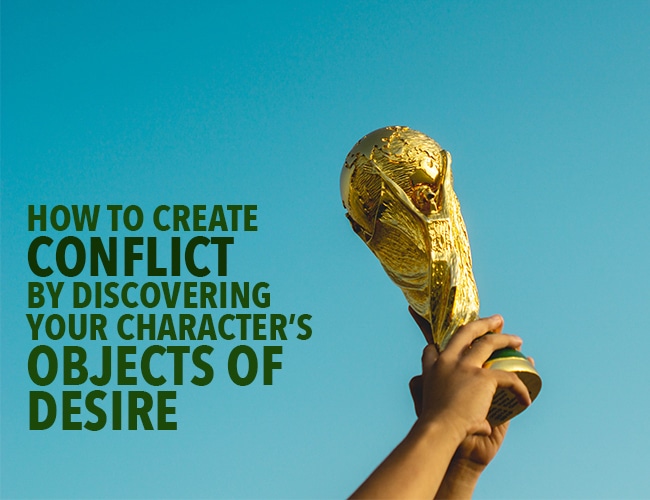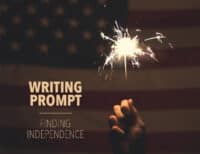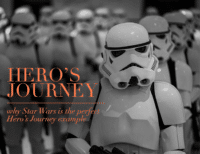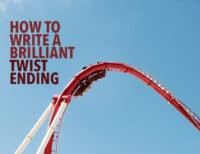Do you know what your character's objects of desire are? What do they want, and what do they need? And how do you leverage those wants and needs to create conflict in your story?

Writing a great story is a very challenging task. But there are secrets, shortcuts, and techniques that will give you an advantage as you start writing so that every word is focused on the proper goal of your story.
Shawn Coyne's Story Grid is an excellent place to turn. And in this third post in my series on writing great stories using Story Grid principles, you'll learn why conflict is the lynchpin of powerful storytelling and how to use it to thrill your readers.
New to Story Grid? Check out the book, podcast and website. Plus, read parts one and two in our Story Grid series.
The Nature of Conflict
All stories are built on conflict. Conflict can take many forms. It can be between opposing characters, like a hero and villain. It can be between man and nature, like in a monster or survival story. And conflict can be internal, manifesting itself through doubt, fear, betrayal, and despair.
Here's how Coyne puts it in The Story Grid:
For a book to “work,” it has to feel true. The story must contain authentic conflict. And that means it needs two kinds of conflict: external and internal.
Ideally, a well-told story will follow a familiar external arc, such as Joseph Campbell's Hero's Journey archetype. The hero is called to action by some kind of inciting incident, ventures out into the new world, confronts villany and death, and then returns with a boon to share with society.
But underneath this surface-level of the story you'll usually find something more, an internal arc as well. The character typically faces emotional challenges, thereby growing and changing at the same time.
As Shawn Coyne writes in The Story Grid,
“You must take great pains to make the conflicts in your Story varied and surprising. How varied depends upon your choice of global content Genre.”
Let's look at these two basic levels of conflict that your story is going to need.
External: What does my character want?
On the face of every story is an object of desire. It is, in a nutshell, what the protagonist wants.
Indiana Jones wants the Ark of the Covenant. Harry Potter wants the Sorcerer's Stone. Romeo wants Juliet.
The pursuit of this goal or object of desire establishes the structure of the story. The whole reason the story exists is because the character wants this object of desire, but cannot have it (at least right away).
Your job as the storyteller, writing a story in an established Story Grid Genre, is to make sure your protagonist chases this goal in an exciting, familiar, yet innovative way. The reader will be bored or disappointed if you don't.
But to really make your story a winner, it will need an additional layer of conflict complicating the first.
Internal: What does my character need?
At a deeper level than physical want is the reality of emotional need. All of us have emotional needs that trump our physical wants and desires, yet our dream is for the external and internal to successfully overlap.
Using one of the previous examples, Harry Potter may want the Sorcerer's Stone, but more deeply he wants to have his family back. While he can never truly achieve this need, this internal object of desire, he finds other ways to satisfy it along the way.
Here's another example from my daughter's current favorite Disney story: Aladdin.
Aladdin's external goal is to become a prince so he can marry Jasmine. Though he falls in love with Jasmine the instant he meets her, he cannot marry her because of his poor social status. So as he befriends the Genie to win her, he is forced to reckon with his deep need, his internal object of desire: to be a good person and do the right thing, despite being forced to steal in order not to starve.
This is why the movie isn't over when Aladdin and Jasmine are betrothed. It actually reaches its fulfillment when Aladdin uses his final wish to free the Genie, truly becoming the good person (or “diamond in the rough”) that he has struggled to be.
In The Story Grid, Coyne defines internal conflict as “the Hamlet-esque inside-our-head dithering that we all do whenever faced with a difficult task.”
It is this “dithering” that makes human life so interesting. If all we said and did was the 100% truth all the time, then nothing would be interesting. There would be no stories. Only reports.
But when internal conflict is added to the mix — when a protagonist needs some internal object of desire even more than the thing he wants — things get interesting. Compassion and empathy are stirred up in the reader. It's complicated.
And the goal of your storytelling is to keep matters as (reasonably) complicated as possible so your reader is on edge until the very last page.
When Inner and Outer Objects of Desire Are Opposites
If there is a “secret sauce” to great storytelling, this is it. Coyne is rather forward about the fact that intriguing conflict is what keeps readers turning pages at a breathless pace.
“Focusing on the struggle to get objects of desire will make up for almost every other kind of Story misstep. The reader/viewer/listener has to attach and invest themselves in the Story’s protagonist(s). And the way he attaches is through the fictional character’s pursuit of objects of desire.”
This is why we react so strongly when characters make stupid choices. We demand that characters chase their wants and needs with relentless dedication. When a character changes his or her mind out of nowhere, it can be infuriating (I'm looking at you, Jurassic World: Fallen Kingdom).
But when you keep your characters loyal to their external wants and bound to their internal needs, making innovative choice after innovative choice to somehow achieve both objects of desire despite the odds and consequences, readers will love you for it.
To conclude, I can do no better than quote Coyne's encouragement from The Story Grid, passing along hope that no matter how “broken” your story is, you can always return and find a way forward.
“Whenever you get stuck telling your Story … go back to the foundation … the quest for conscious external and subconscious internal objects of desire. Are you making those quests in your lead character clear? If you aren’t, you must call up your inner demolition crew, break up that old cracked foundation and throw it away. And then go back to these two questions: What does my character want? What does my character need?”
PRACTICE
Reflect on your current work-in-progress or a story you're eager to begin writing. For fifteen minutes, write a short description of your protagonist's external want and internal need. How are they compatible? How are they incompatible, possibly resulting in powerful conflict for your story?
Share your character's objects of desire in the comments below, and be sure to leave feedback for your fellow writers!







0 Comments